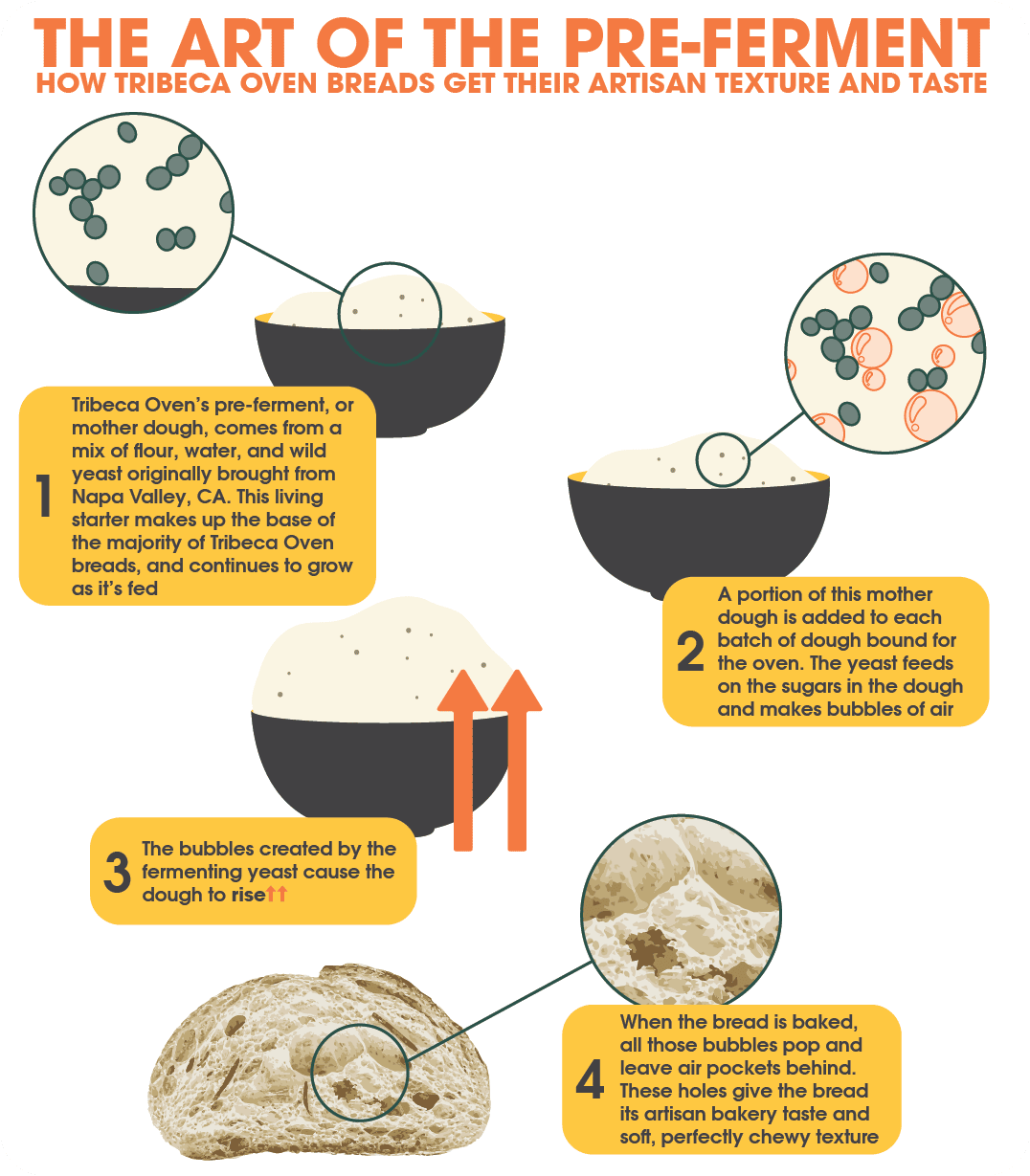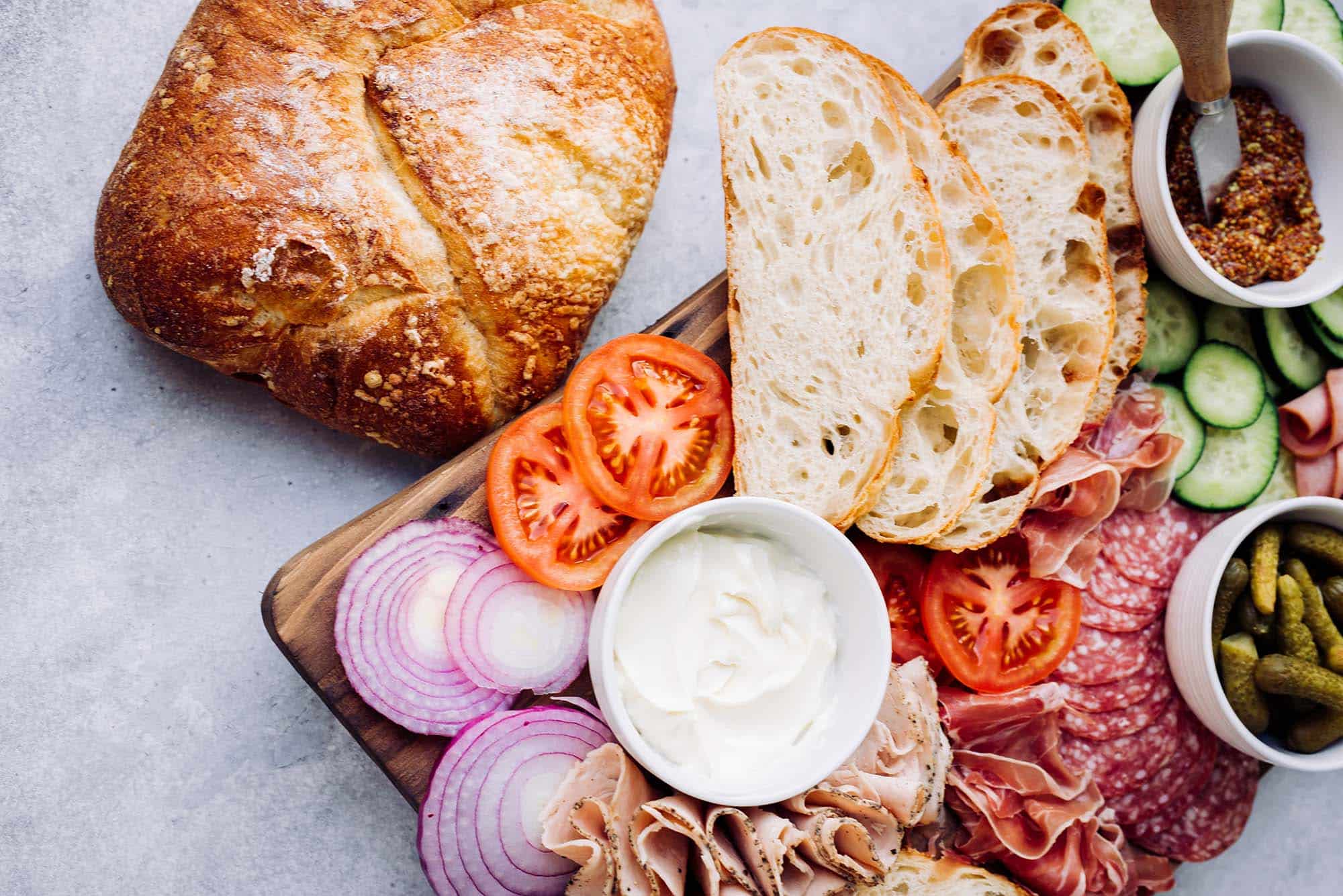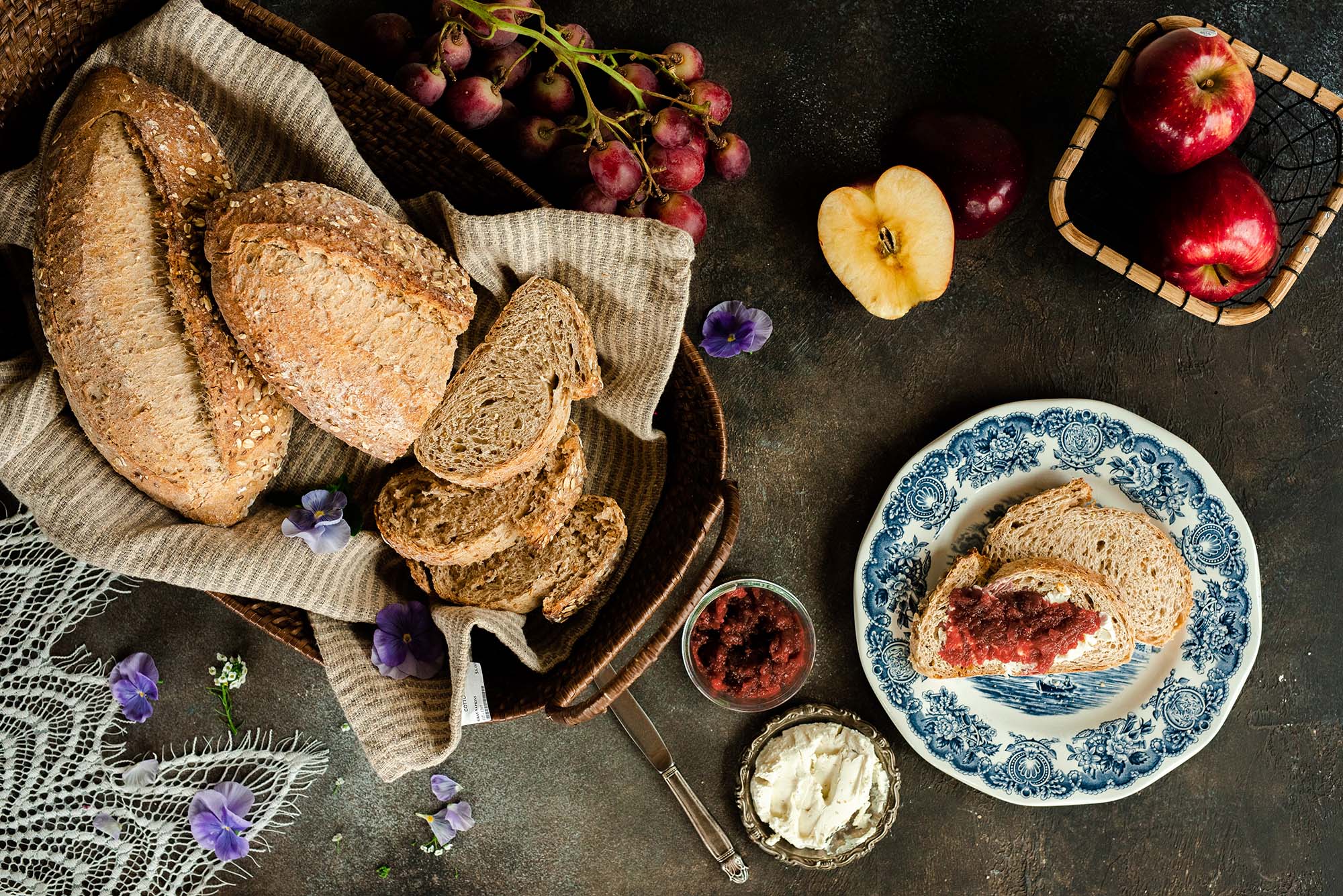Bread. Besides being possibly the most delicious and versatile carb, it’s also integral to the diet of millions of people around the world. In fact, bread was one of the main contributors to the formation of the earliest human civilizations. But in the modern world, nobody does bread quite like Tribeca Oven. Let’s take a little trip through past and present and learn what makes Tribeca Oven's bread so unique.
A (very brief) history of bread
For thousands of years, humans have been baking bread. The first breads known to humankind were flatbreads, made with wild wheat, barley, and plant roots over eleven thousand years ago. The domestication of wheat was first documented in the Fertile Crescent, and cultivation made its way across the world from there. As the growing of wheat spread, so did the formation of towns, as people settled down to tend the wheat and shed their nomadic lifestyles.
Bread is thoroughly documented throughout early recorded history, and almost every ancient civilization had their own way of making bread. Mayans made tortillas and other unleavened breads from corn. Ancient Egyptians created some of the first leavened bread loaves in cones, rounds, and even animal shapes. Greek bread was made mostly from barley, in a wide variety of cakes, loaves, and rolls.
At the turn of the 20th century, industrialization gave rise to automated bakeries, where machines baked, sliced, and packaged loaves at rates never seen before, supplying the world with cheap, easily obtainable bread. But with these manufactured loaves came manufactured flavors, as factories turned to chemical additives to aid in mixing dough and to reduce the amount of time it took for yeast to ferment. Luckily, a select few bakeries like Tribeca Oven continue to use traditional recipes and baking methods to mix their doughs and proof their bread.

Yeast: Rising to the occasion
What most ancient leavened breads had in common was the formation of natural yeast by mixing flour, water, and sugar and letting it sit out, similar to sourdough. But what is yeast? Yeast is a microscopic, single-celled fungus found all around us. Yeast is what ferments grain and grapes for beer and wine, and, most importantly, yeast is what makes bread rise. To get that perfect fluffy loaf, yeast has to feed on the sugars in the dough. As it eats, it converts those sugars into carbon dioxide, which creates air bubbles in the dough. The longer the yeast is able to feed, the bigger the bubbles and the more open the crumb of the bread is.
Today, we’re able to regulate the production of yeast and precisely control the way it makes bread rise for that perfectly soft, chewy texture. Although yeast is commercially available, Tribeca Oven stuck to those traditional bread-making techniques and created a mother dough from wild yeast found in Napa Valley, California.
So, what’s the big deal about wild yeast?
If you’ve ever had a loaf of artisan bread from a corner bakery, you know that the texture and taste are a thing of beauty. When making a mother dough, also known as a pre-ferment, a portion of the dough is made and set aside to gather wild yeast from the air around it. This process can’t be rushed, as yeast itself is a living organism and has to be given the ample time it needs to feed and ferment.
Wild yeast is also what makes sourdough bread so fluffy and chewy, but natural bacteria in the pre-fermenting process give the sourdough its characteristically sour taste. Not all of Tribeca Oven’s breads are destined to turn into sourdough, but thanks to a generous helping of patience, every loaf comes out of the oven with a perfect crust and a soft, chewy interior.
13 Steps to Perfection
There’s a lot that goes into the breadmaking process, especially when batches are made with traditional methods and recipes. Tribeca Oven has perfected their 13-step process to make every loaf perfect every time:
- Scaling
- Ingredient Preparation
- Pre-Ferments
- Mixing
- Small Batch Bulk Fermentation
- Folding
- Bench Rest
- Dividing
- Shaping
- Final Fermentation
- Scoring
- Baking
- Cooling and Storing
It’s Tribeca Oven’s dedication to these unrushed, perfected steps that make their bread so delicious with each and every batch.

What can I do with bread from Tribeca Oven?
So, you’ve picked out the perfect loaf. How do you enjoy it? Being the perfect base for pretty much any topping isn’t easy, but Tribeca Oven's bread always manages to pull it off. Make sandwiches in all shapes and sizes, toast and top with butter and jam, slice and use for bruschetta, or just dip in your favorite soup; the possibilities are literally endless. Try cubing up a loaf and adding it to a dish with eggs, milk, and cinnamon to bake up a perfect bread pudding, or toast those bread cubes for quick croutons. Delicious, artisan, and versatile, Tribeca Oven bread will always be the “loaf” of your life.
Products Mentioned
Leave a Comment
Latest Posts
Salts of the Earth: A Guide to Celtic Sea Salt & Sel Gris
Learn more about delicious Celtic Salt and Sel Gri

















